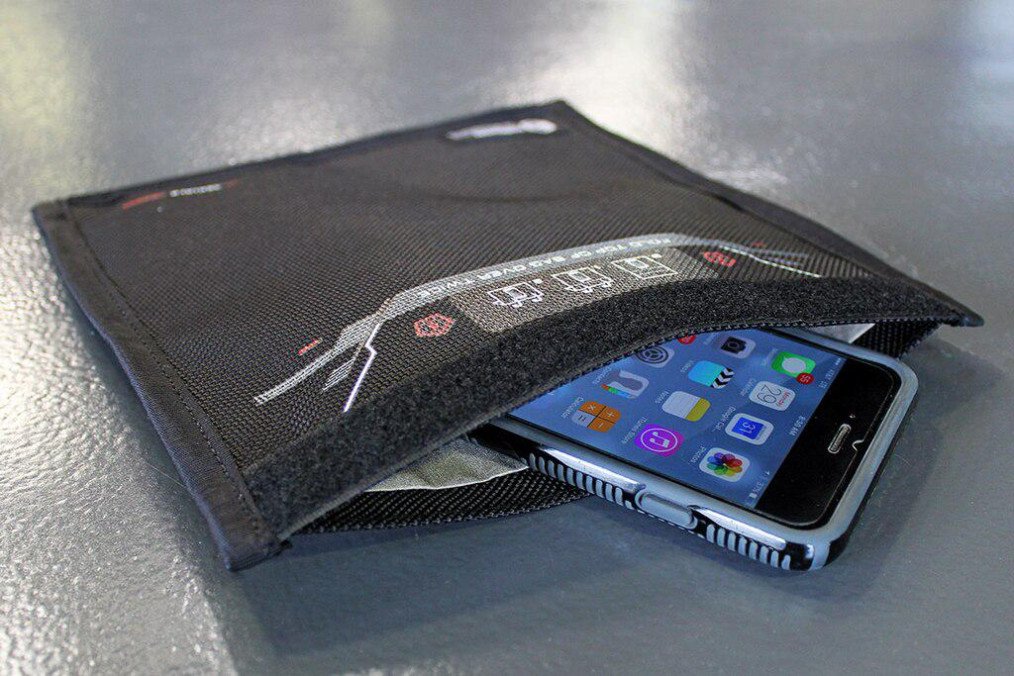- Category
- Life in Ukraine
Traveling to Areas Close to the Frontline in Ukraine? Here’s 7 Steps You Can Take to Operate Your Phone Safely

The days of pepper spray and traveler's checks are over; nowadays, the best way to mitigate any threat to your security while traveling abroad is in your pocket. There are countless tales of humanitarian aid groups and military bases being targeted because individuals did not understand the risks involved with phone usage and the importance of diligent cyber security practices.
The following are considered best-practices if you plan to visit Ukraine’s frontline areas or if you will be interacting with, or working alongside, the military.
We’ve compiled a list of advice to help keep you safe.
Local SIM card:
SIM cards are available just about anywhere in Ukraine; gas stations, grocery stores and of course from the provider itself (KyivStar and Vodafone are some of the biggest). A one month unlimited plan costs around 250 hryvnia (about 5 dollars). Not only will it be much cheaper than your home provider's international package, it will also protect you from being tracked or identified as a foreigner for anyone who may be looking.
Pro Tip: If you have a phone from the United States, you must make sure it is “unlocked” by your carrier before traveling. Otherwise it will not be compatible with another SIM card.
Encrypted communication apps:
Using encrypted communication apps is a must when traveling in Ukraine. Not only is it what everyone uses to communicate, it is also a good way to prevent unwanted eyes from intercepting your messages. Of all the different apps Signal is considered to be the most secure. Other popular choices include Telegram, Viber and Whatsapp. All of these programs are free and can be downloaded onto a smartphone or laptop from the App Store.
Pro tip: At military and police checkpoints it is not uncommon for guards to scan your phone. They are looking for saboteurs who may be sending photos and information to Russia. For this reason it is best to avoid sending any questionable pictures to friends or family that could be taken the wrong way. Want to show your friend that photo you took? Save it until you get home.
Social media use:
You would be surprised how many security catastrophes have resulted from social media. Russians don’t need a geo-tag to figure out where you are. Something as small as a road sign in the background or a landscape can give your location away making you, and whoever you are with, a target. You are not immune as a foreigner—time and time again Russia has intentionally killed foreign journalists and members of international aid outfits. Even if you are neither of those things, it is possible you might be confused for one. Best to refrain from posting on any social media until you’ve left a location, or better yet the country. Keep in mind, if posting a picture may put others at risk after you’ve left, then better not to post at all. Keep a low profile!
Pro tip: Taking any kind of picture of military personnel, military objects or police checkpoints is strictly prohibited. Likewise you never know someone’s situation, even if you are in what feels like a relaxed atmosphere, it is best to ask before snapping!

Faraday bag:
Imagine a bag that instantly makes your device disappear to the outside world? Behold the Faraday Bag. The name comes from the creator, Michael Faraday, who in 1836 discovered a way to repulse electromagnetic fields. The same technology is used today in a pocket-sized pouch which shields all signals and frequencies from reaching your phone, key fob or any other device. These bags cost about $20 on amazon and are small enough to fit in a purse. As soon as you take your phone out of the bag, everything is back to normal. Easy!
Use a VPN:
Some websites and content you are accustomed to using back home may not be unavailable in Ukraine. It is most common among government websites, websites that use portals, and certain news and media content. It will appear as an “error” or it may plainly state this content is not available in your current country. It is easily navigated around by downloading a VPN onto your laptop and/or mobile device. You can buy various VPNs on the App Store as well as online and choose from which country you would like your device’s IP address to appear. Depending on which IP address you choose, your laptop or phone will appear to be actually “in” that country to anyone who may be looking.
Turn off location services:
If your plans involve traveling to frontline regions, or working with the military, then it is mandatory that you turn off location services. This also means not “live-sharing” your location either — if the recipient can see it, then who else can? It should be noted that it is not enough to simply turn off your phone, you must manually switch off location services which, for most phones, can be found in the settings.
IMEI number:
The most safety-conscious thing you could do would be to buy a local phone so that you are not using any device with a foreign IMEI number. Believe it or not, phones and laptops can actually be traced by their IMEI number. This means that no matter which SIM card you have in use, foreign or domestic, your device is recognizable and can be identified by the country from which it was purchased. The only way to get around this is to purchase a cheap local phone. Affordable smartphones are widely available in Ukraine, some for as little as $100. Worried about keeping in touch with friends and family? Download your preferred encrypted messaging app and scan the QR code from your old profile- it will auto-populate to the new phone.
-fca37bf6b0e73483220d55f0816978cf.jpeg)

-29a1a43aba23f9bb779a1ac8b98d2121.jpeg)

-f88628fa403b11af0b72ec7b062ce954.jpeg)

-24deccd511006ba79cfc4d798c6c2ef5.jpeg)

-73e9c0fd8873a094288a7552f3ac2ab4.jpg)